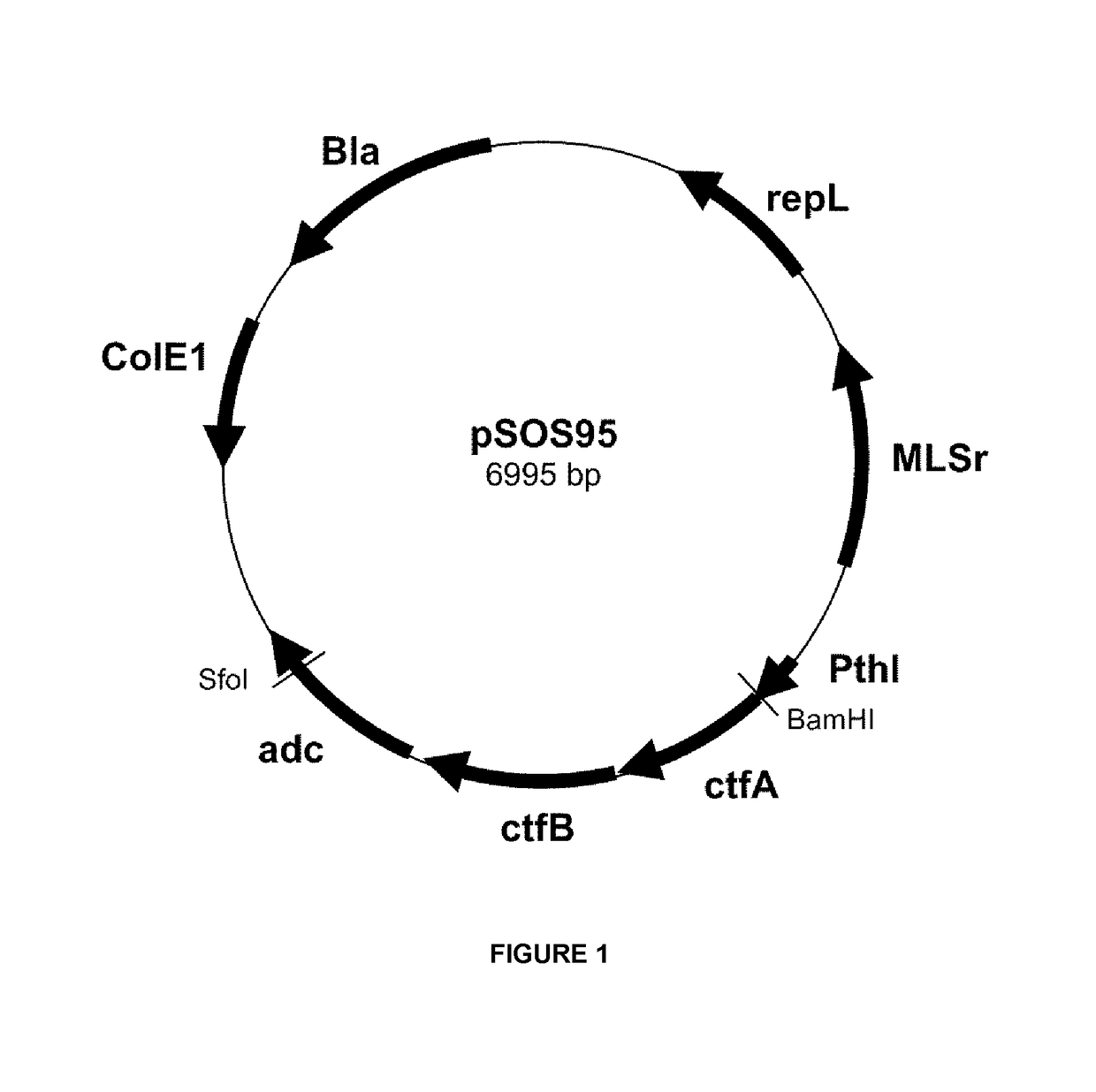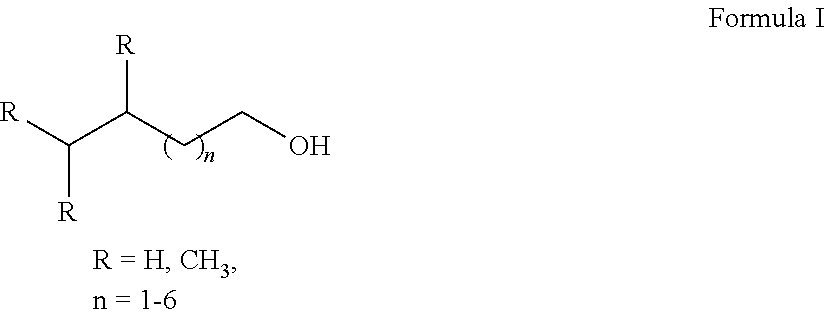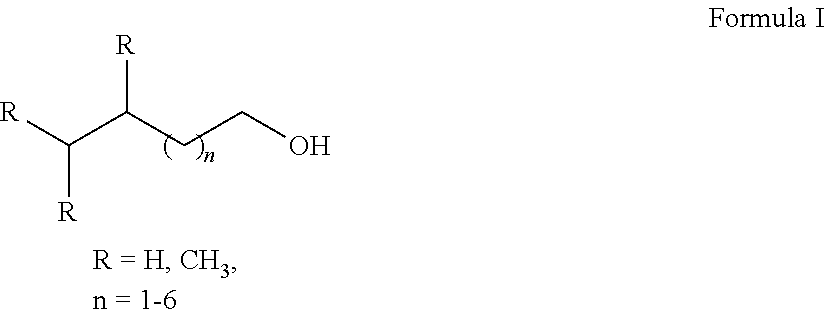A genetically modified acetogenic cell
a technology of acetogenic cells and genetic modification, applied in the field of recombinant cells, can solve the problems of limiting the ability of the producer, the production process of cornstarch butanol could cost nearly as much energy, and the butanol and other higher alcohol prices may also increas
- Summary
- Abstract
- Description
- Claims
- Application Information
AI Technical Summary
Benefits of technology
Problems solved by technology
Method used
Image
Examples
example 1
[0083]Generation of a genetically modified acetogenic bacteria for the formation of Butanol
[0084]Vectors pATh-LEM-04 and pATh-LEM-14
[0085]The genes Thiolase from C. acetobutylicum ATTC 824 (thl_Ca) (SEQ ID NO:28), hydroxybutyryl-CoA dehydrogenase from C. kluyveri (hbdl_Ck) (SEQ ID NO: 29), crotonase from C. klyuveri (crtl_Ck) (SEQ ID NO:30) and butyryl-CoA dehydrogenase form C. kluyveri (bcd1_Ck) (SEQ ID NO:31) are amplified from the corresponding genome and were inserted into the vector pEmpty by using KasI and BamHI. This plasmid (pEmpty) was based on the plasmid backbone pSOS95 (FIG. 1). To use pSOS95, it was digested with BamHI and KasI. This removed the operon ctfA-ctfB-adc, but leaves the thl promoter and the rho-independent terminator of adc. The newly generated vector, which bore the named genes, was called pATh-LEM-02 (SEQ ID NO:51 refers to the sequences of the genes connected together in pATh-LEM-02 without the sequence of the actual vector).
[0086]In a second cloning step...
example 2
[0109]Fermentation of Genetically Modified Strains on Mixtures of H2, CO2 and CO Showing Acid and Higher Alcohol Formation.
[0110]For cell culture of
C. ljungdahlii pATh-LEM-04
C. ljungdahlii pATh-LEM-14
C. ljungdahlii pATh-LEM-15
C. ljungdahlii pATh-LEM-16
C. ljungdahlii pATh-LEM-17
C. ljungdahlii pATh-LEM-18
C. ljungdahlii pATh-LEM-19
C. ljungdahlii pATh-LEM-20
C. ljungdahlii pATh-LEM-21
C. ljungdahlii pATh-LEM-22
C. ljungdahlii pATh-LEM-23
C. ljungdahlii pATh-LEM-24
C. ljungdahlii pATh-LEM-25
C. ljungdahlii pATh-LEM-26
C. ljungdahlii pEmpty
C. autoethanogenum pATh-LEM-04
C. autoethanogenum pATh-LEM-14
C. autoethanogenum pATh-LEM-15
C. autoethanogenum pATh-LEM-16
C. autoethanogenum pATh-LEM-17
C. autoethanogenum pATh-LEM-18
C. autoethanogenum pATh-LEM-19
C. autoethanogenum pATh-LEM-20
C. autoethanogenum pATh-LEM-21
C. autoethanogenum pATh-LEM-22
C. autoethanogenum pATh-LEM-23
C. autoethanogenum pATh-LEM-24
C. autoethanogenum pATh-LEM-25
C. autoethanogenum pATh-LEM-26
C. autoethanogenum pEmpty
[0111]5 mL of the c...
example 3
Materials and Methods
[0114]In the following examples, genetically modified Clostridium ljungdahlii or Clostridium autoethanogenum were cultivated in order to produce butanol and / or the precursors 3-hydroxybutyrate and / or butyrate. A complex medium with 5 g / L fructose was used, consisting of 1 g / L NH4Cl, 0.1 g / L KCl, 0.2 g / L MgSO4×7 H2O, 0.8 g / L NaCl, 0.1 g / L KH2PO4, 20 mg / L CaCl2×2 H2O, 20 g / L MES, 1 g / L yeast extract, 0.4 g / L L-cysteine-HCl, 0.4 g / L Na2S×9 H2O, 20 mg / L nitrilotriacetic acid, 10 mg / L MnSO4×H2O, 8 mg / L (NH4)2Fe(SO4)2×6 H2O, 2 mg / L CoCl2×6 H2O, 2 mg / L ZnSO4×7 H2O, 0.2 mg / L CuCl2×2 H2O, 0.2 mg / L Na2MoO4×2 H2O, 0.2 mg / L NiCl2×6 H2O, 0.2 mg / L Na2SeO4, 0.2 mg / L Na2WO4×2 H2O, 20 μg / L biotin, 20 μg / L folic acid, 100 μg / L pyridoxine-HCl, 50 μg / L thiamine-HCl×H2O, 50 μg / L riboflavin, 50 μg / L nicotinic acid, 50 μg / L Ca-pantothenoic acid, 1 μg / L vitamin B12, 50 μg / L p-aminobenzoic acid, 50 μg / L lipoic acid.
[0115]The heterotrophic cultivations were performed in 50 mL medium in a...
PUM
| Property | Measurement | Unit |
|---|---|---|
| Fraction | aaaaa | aaaaa |
| Time | aaaaa | aaaaa |
| Time | aaaaa | aaaaa |
Abstract
Description
Claims
Application Information
 Login to View More
Login to View More - R&D
- Intellectual Property
- Life Sciences
- Materials
- Tech Scout
- Unparalleled Data Quality
- Higher Quality Content
- 60% Fewer Hallucinations
Browse by: Latest US Patents, China's latest patents, Technical Efficacy Thesaurus, Application Domain, Technology Topic, Popular Technical Reports.
© 2025 PatSnap. All rights reserved.Legal|Privacy policy|Modern Slavery Act Transparency Statement|Sitemap|About US| Contact US: help@patsnap.com



